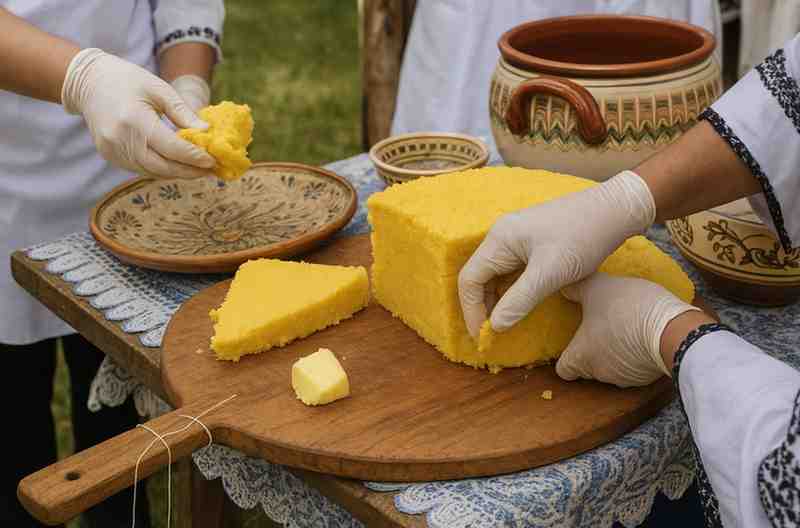When technology fails, the true art of navigating without a compass shines through. Many people have forgotten how to find their way when the compass or GPS is unavailable, yet it becomes essential in emergency situations, wilderness adventures, and survival activities. From my own trips into the mountains, I realized that this skill reduces reliance on devices and builds a deeper connection with nature, a bond that feels strengthened every time I move through the forest without artificial help. Natural navigation often relies on elements like the sun, stars, and vegetation, and I remember how my grandfather taught me these traditional methods that his ancestors once explored.
This article aims to propose techniques for navigating without a compass by using natural elements, with the goal to rediscover old ancestral knowledges. By learning such methods, I personally felt a sense of greater autonomy acquired along the trails, an ability that truly does enrich outdoor experiences. As a reader, you can be guided through simple yet effective techniques of navigating in nature, just as I was. Each journey not only sharpened my awareness but also reminded me how independence from tools can awaken something timeless within us.
Using the Sun for Orientation
During one of my treks, I realized how sunrise and sunset could guide me when no map was available, a key skill in navigating without a compass. The movement of the sun from east to west becomes an essential part of orientation because the sun always rises in the east and sets in the west. This trajectory is nearly constant and offers a reliable reference. In the morning, watching the horizon, I could note the position of the sun. At noon, in the northern hemisphere, the sun shifts south, while in the southern hemisphere it moves north. By observing the direction of the shadow when it is the shortest, the cardinal points can be identified. In the evening, when the light indicates the west, the day itself becomes a natural compass.
To reinforce this method, I used different techniques I had once read about and later applied outdoors, all part of navigating without a compass. One effective technique was placing a stick planted in the ground; the point of the shadow moved westward in the morning and gradually extended toward the east in the evening. By drawing a straight line between the two positions, a path is traced that shows the approximate east-west direction. Based on such observations, orientation can be determined without difficulty. By combining these small tricks and relying on the outdoor orientation that the sun gives, it becomes possible to travel even without compasses or GPS.
Shadow and Sticks
On one camping trip, I relied on the shadow stick method as part of navigating without a compass, because it was both simple and effective to orient myself without tools. A straight stick, planted vertically in the ground, will cast a mark that can be carefully observed. This approach works by exploiting the movement of light over time. At the end of the initial shadow, I placed a stone as a mark and decided to wait about 15 to 30 minutes. After this period, the second position of the shadow appeared, giving me a new point of reference.
Once the two marks were made, a line was drawn between them, which indicates the east-west direction, a key step in navigating without a compass. The first mark represents the west, while the second stands for the east. By standing on this line, with left and right aligned, north is directly ahead and south rests behind. Around the middle of the day, when the sun is high in the sky, the shadow becomes shorter and moves quickly, allowing a rapid determination of cardinal points. I found this particularly useful in environments where natural landmarks were sparse. To confirm accuracy, I often combined techniques, which gave a precise and reliable sense of direction achieved without resorting to modern instruments.
Starry Night and Identification of Constellations
On a clear night, the sky becomes a starry backdrop that has guided travelers for centuries, a crucial aspect of navigating without a compass. My first real attempt at orientation under the open sky was during a hiking trip in the northern hemisphere, where the identification of constellations became both exciting and necessary. The North Star, also known as Polaris, stood as a steady reference, almost fixed above the celestial North Pole while everything else moves slowly around it. I remember tracing a line from the Big Dipper, using its pan where two stars can be spotted clearly. By following this line upward several times the distance, the North Star was found, and it indicates true north without fail.
Later, while traveling further south in the southern hemisphere, the Southern Cross proved equally recognizable and valuable for navigating without a compass. Its four main stars forming a cross create a natural guide, especially when an imaginary axis is extended several times its length until it touches the horizon. Adding the Pointers, those bright stars close by, helped me confirm the direction. By combining these patterns, a precise method of nocturnal travel was achieved. Over time, by familiarizing myself with these stellar landmarks and practicing without relying on modern equipment, I discovered a deeper trust in the ancient art of finding the way through the stars.
Using Other Constellations for Orientation
Beyond the North Star and the Southern Cross, I often rely on other constellations for better orientation when navigating without a compass under the night sky. The Big Dipper, sometimes called the Pan or Wagon, is one of the most recognizable star patterns I’ve used. Its two stars, Dubhe and Merak, form a straight line that points directly toward Polaris. By tracing this imaginary guide, the position of the North Star can be determined, and that is especially useful when no tools are at hand. Another constellation that has helped me is Cassiopeia, shaped like a W or M in the heavens. Sitting on the opposite side of Polaris from the Big Dipper, it balances the view and helps to confirm the direction of true north.
Over the year, the positions of these constellations shift; in summer the Big Dipper appears high, while in winter it is lower, and in autumn Cassiopeia becomes more easily visible—a valuable consideration when navigating without a compass. I have learned that this redundancy makes them reliable guides because when one fades, the other stands out. By observing them carefully and applying these techniques, travelers gain additional knowledge and with regular practice turn it into a valuable skill. Unlike modern technologies, this method depends on awareness and memory, and the summary of my own experience is that stargazing teaches patience, precision, and the joy of old-world navigation.
Observing the Surrounding Nature
During my travel, I often keep a small fabric-covered notebook filled with sketches and stamps of places I’ve been, sometimes even a tiny red and white compass tucked inside next to a heart-shaped stone, but primarily for navigating without a compass. On one page, I drew a background map of North and South America, with oceans labeled—a reminder that even without tools, nature offers plenty of clues for navigation. For example, mosses growing on trunks usually favor the damper side where less sunlight reaches, creating a humid environment. When I once found a tree covered with thick moss, the most abundant growth quietly hinted at the north. Although not an absolute rule, it worked in that local setting.
The growth of branches and leaves also guides orientation, a helpful strategy when navigating without a compass. I’ve noticed how they stretch toward the light, making one side of the tree leafier and often denser. Certain fir species even grow longer limbs on the sunny side, shaped by steady sunlight. Walking along the edge of a forest, the south-facing sides looked fuller and brighter, pointing naturally toward the cardinal directions. By observing vegetation this way and combining natural techniques, I could form an approximate direction that proved surprisingly reliable. Such tools may not be modern, but they are timeless lessons in connecting with the world around us.
Streams and Rivers
When I first learned to travel in mountainous regions, I quickly realized how streams and rivers act as powerful natural elements for navigating without a compass. These waterways often converge into valleys where human populations settle, creating a direct link to villages, roads, and even signs of civilization. By descending along a stream that flows steadily, I could sense the direction toward inhabited areas without relying on modern tools. This technique may sound simple, but by observing the hydrographic network and its tributaries, one can build a mental layout that feels almost like reading a natural map. The process of staying precise with navigation comes from noting where smaller tributaries join a larger river, and how the altitude shifts along the way.
In one journey, I noticed how sudden turbulence in the water and a rising level hinted at rainfall upstream, while a dried-up watercourse whispered of drought—important cues for navigating without a compass. Such weather conditions became signs I relied on for survival. Even confluences where two paths meet became natural landmarks, guiding me toward secondary routes, trails, or even man-made tracks. The terrain features themselves tell a story: they help us orient in an effective method that feels reliable when combined with other techniques. It is this practice of interpreting the world around us that enriches the journey through nature and makes travel through complex landscapes more meaningful.
Mountains and Hills
While walking through rugged terrains, I often found mountains and hills to be the most dependable landmarks for navigating without a compass. Their peaks are easily visible from afar, making them natural guides when planning a route toward a distinctive peak, rocky ridge, or tip that helps keep a general course maintained. This ancient yet effective technique works because the arrangement of ranges usually follows a north-south or east-west line, giving clues to orientation and even a rough cardinal direction that can be estimated. In certain regions, I relied on valleys and passes between mountain ridges, which often lead to glacial lakes or other natural destinations, making travel much easier and sometimes even facilitated by the natural reliefs.
During my outdoor journeys, the shape and height of a mountain offered more than just beauty—they revealed altitude shifts, direction of slopes, and even differences in vegetation caused by sunlight, all useful for navigating without a compass. Observing these detailed changes helped me decide where to find shelter against unfavorable weather. A ridge gave protection from wind or rain, which sometimes meant the difference between comfort and survival. I’ve come to see this traditional approach as not just reliable but also a way to build a deeper connection with the environment. In those moments, the surrounding world felt alive, offering knowledge to anyone willing to pay attention and learn from it through experience.
Reading Wind and Air Currents
During my outdoors adventures, I learned that wind and air currents are essential natural elements for navigating without a compass. By paying attention to prevailing winds, an effective method for determining direction emerges. In many regions, westward winds can indicate movement toward the east. Simply observing the direction from which the wind comes provides a quick orientation, especially when combined with other methods like watching tree branches, foliage, and leaves. Identifying where the leaves rustle most, or tossing light materials such as straw or twigs, gives a clear visualization of the wind’s trajectory, even when clouds at higher altitudes also confirm its direction.
Strong gusts reveal open passages, along hills or through valleys, allowing more precise navigating without a compass. Dropping or tossing small twigs makes following the wind’s speed intuitive, while natural indicators like clouds enhance confirmation of the direction. This technique, when combined with streams, mountains, or vegetation cues, facilitates a deeper experience in nature, enriches one’s understanding and appreciation of the environment, and builds confidence in self-reliant orienting.
Reading Temperature and Humidity
While exploring the outdoors, I discovered that temperature and humidity are subtle but reliable cues for navigating without a compass. Sunny areas facing south are naturally warmer, especially in the morning, while the east side of any object receives the first rays of sunlight, and by noon, the south side becomes the warmest. Conversely, shaded north areas retain more moisture, and mosses and lichens that prefer humid environments grow more abundantly on trees and rocks in these locations. Close observation of soils, which can appear dry or cracked after prolonged exposure to the sun, further highlights variations in temperature and humidity, helping me determine direction.
By combining these natural techniques with insights from streams, mountains, and wind, navigating without a compass becomes far more intuitive. Understanding the subtle interplay of temperature, humidity, and environmental cues allows for precise orienting, giving a stronger sense of direction in unfamiliar terrains. Over time, practicing these observations builds confidence and a deeper connection with natural environments, turning ordinary outdoor walks into opportunities for learning and skill refinement.
Expanding Your Natural Navigation Skills
Through countless outdoor adventures, I realized that natural navigation techniques go far beyond streams, mountains, wind, temperature, and humidity, forming the foundation of navigating without a compass. The sun and stars provide reliable indications of direction, while vegetation and animal behavior offer subtle cues about the surrounding terrain and features. Observing landmarks in combination with these cues allows for precise orientation, even in difficult conditions. By combining multiple techniques, one can achieve a reliable sense of direction that feels natural and intuitive.
Each outing in nature is an opportunity to practice attentively, mastering skills that enhance autonomy and confidence in navigating without a compass. Using practical resources and guides, such as the website Jean Le Dindon, helps refine these abilities further. With consistent experience, the knowledge of natural navigation not only enriches the outdoor experience but also strengthens the connection with the environment, turning each journey into a lesson in observation, patience, and skillful navigation.












Leave a Reply